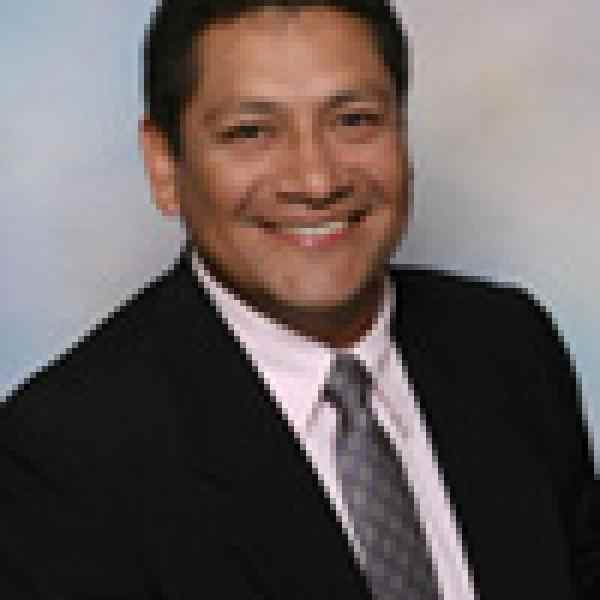Introduction
A successful inventor, Juan Carlos encourages Peruvians to use local materials and their own creative talent to improve living conditions among the poor.
The New Idea
Juan Carlos, who has invented with found materials since childhood, is leading a movement for social inventing, applying the inventor's imagination to local development needs. He encourages inventors to consider several aspects of their work's social viability: local access to materials, local maintenance and repair, low cost, convenience, and environmental impact.
The great innovation, as Juan Carlos sees it, is not only creating new objects, but also creating a new paradigm in which self-sufficient people generate their own development technology and do not rely on expensive imported solutions. Unique to Juan Carlos' idea is his desire to recover and cultivate an innate creative capacity that goes largely untapped in poor communities. He recognizes poor people's creativity and teaches them to invent for self-reliance. To promote this new profession, he supports aspiring young inventors and encourages accomplished inventors to turn towards social inventing.
The Problem
According to Peru's National Institute of Statistics, 42 percent of the population lives in poverty. Although the poor face unemployment, high infant mortality rates, and environmental degradation, government resources are scarce and civil society's response is weak. Citizens do not feel empowered to solve their own problems. They tend to save up in order to purchase expensive imported products, which are often inappropriate to local needs.
Poor people are creative, but they have not yet established routines to fully explore, validate, replicate, and sustain their ingenuity. Furthermore, most schools do not foster creativity among students, instead discouraging it through rote learning. This lack of infrastructure to support creativity, coupled with the lack of innovative products, limits development and further increases the gap between rich and poor.
The Strategy
Juan Carlos' strategy has several components: creating social inventions for poor communities, encouraging other inventors to help the poor, training young people to invent, and promoting innovative products to international markets, all contributing to the sustainability of his organization, Inventar.
Juan Carlos invents to fulfill local needs. For example, he invented a new, more efficient way to transport eucalyptus trunks, which are widely used as lampposts in rural areas. To ensure that his inventions stay in use, he offers training and convenes workshops, during which prospective inventors, particularly young people, develop skill and confidence. The first task is always to analyze the most pressing community problems, followed by development of new systems to treat them.
Juan Carlos brings his problem-solving model to the youth in Peruvian schools. The prestige he gained by winning a national inventing contest allows easy access to schools where administrators are eager to welcome a noteworthy guest. In each school, the principal helps him identify ten especially talented and creative youth. He trains them to promote and replicate the training in their own schools and communities. Because students earn school credit for participation in Juan Carlos' project, they are able to devote the time necessary for thorough investigation and testing.
He expects that Inventar's reputation for serious work and its ability to make an impact will continue to open doors for other social inventors to conduct outreach and training through schools.
Another tactic Juan Carlos employs is encouragement of commercial inventors to work on social inventions. Juan Carlos is now collaborating with the national consumer agency, INDECOPI, to establish a special award for social inventions that respond to poverty. He plans to implement this part of his strategy through the prize, strategic partnerships, marketing materials, and panels demonstrating the work of Inventar.
Important to the strategy is using his own inventions as well as those that his trainees have developed to generate income for Inventar, sustaining its role in promoting social innovation. Juan Carlos negotiates with industry, government, and civil society organizations to purchase and implement the social inventions. He helps inventors patent their work, create a fund to support other innovators, and promote cooperation among successful inventors.
The Person
Juan Carlos grew up in a poor section of Lima. His father was an automobile mechanic and his mother was a teacher and social activist. Juan Carlos spent much time in his father's workshop, helping, experimenting, and thinking about ways to do things more efficiently. He made his own toys by repairing and recycling old tools and machines.
At twenty-one, he enrolled in an engineering program but was unable to finish because of financial constraints. He took a job teaching night school in the rural community of Picapiedra, outside of Lima. Enamored by the tranquil countryside, he settled there and set up a workshop where he could invent in his spare time and began examining the plight of the rural poor.
Working with young teens to create an irrigation system for their community led him to believe he could replicate such work in communities throughout the region. Juan Carlos has entered several national and international contests. Juan Carlos was elected President of the Board of Directors of Picapiedra, the local legislature, through which he has been further able to promote his ideas about creativity and inventions for social benefit.
